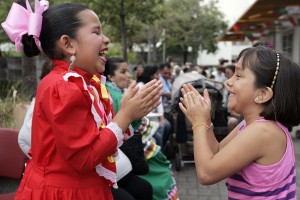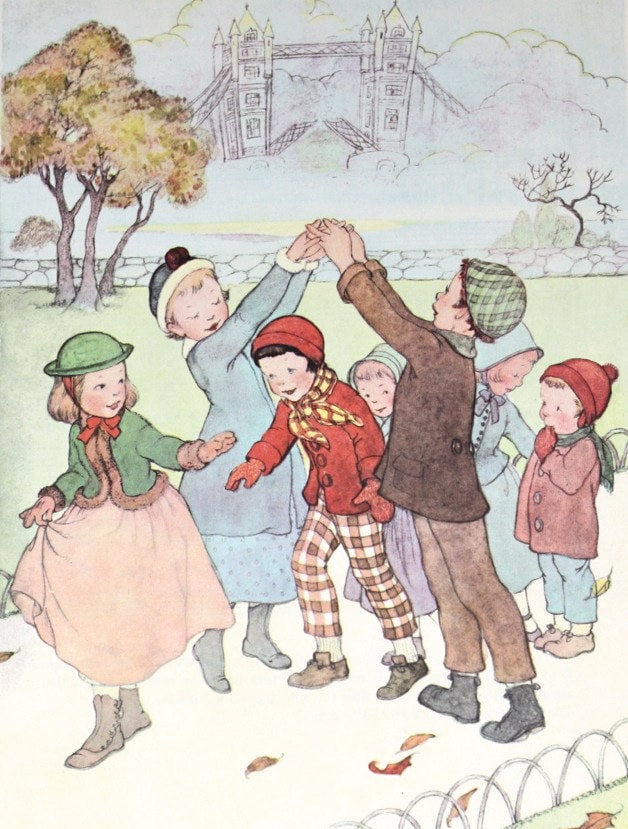
For Valentine’s Day, I offer you this adorable Italian children’s street song, which ends with a kiss!
Lyrics:
La bella lavanderina, che lava i fazzoletti
per i poveretti della citta’
fai un salto, fanne un altro
fai la giravolta, falla un’altra volta
guarda in su, guarda in giu’
dai un bacio a chi vuoi tu!
English Translation:
The little washer-woman, washing all the hankies
for the poor people down in the town
go on a trip (or jump), go on another
turn yourself around, turn around again
look to the sky, look to the ground
give a kiss to whomever you choose!
I have one problem – I watched dozens of home videos of little children dancing and singing this song, and I was unable to decide which one was the cutest. So, I decided to share my two favorites and let you be the judge! (They are less than one minute in length each.)
According to Serena at Transparent Language (a blog which covers aspects of Italian language and culture), La bella lavanderina is “a popular game [where] the children fanno il girotondo (make a ring). One child is chosen to be la lavanderina (the little washerwoman), and stands in the center of the ring acting out the ‘script’ of the rhyme. When the rhyme is finished the bambino or bambina chooses another child from the ring and they swap places.”
La bella lavanderina is a perfect example of “childlore”, or children’s folklore. It must be at least a hundred years old (how long has it been since washer-women washed hankies for poor people?) and thus, part the remarkable oral tradition of songs, rhymes and games that is unique to childhood. Children’s folklore is passed on by word of mouth from one generation of children to another, exists in virtually every culture around the world, and in most cases has no known author. The American Library Association confirms that children’s folklore is indeed “a form of literature”.
Sadly, many factors in our modern world threaten this wonderful oral tradition, including limited recess time at school, segregated age classes, tv and digital media culture, and any other factors that reduce the time children spend in free play in mixed age groups. Some ways that parents can help preserve children’s folklore include coming to my family music classes :), limiting your kids’ screen time, co-ordinating playdates with kids of different ages, and singing and playing children’s music in your home.









